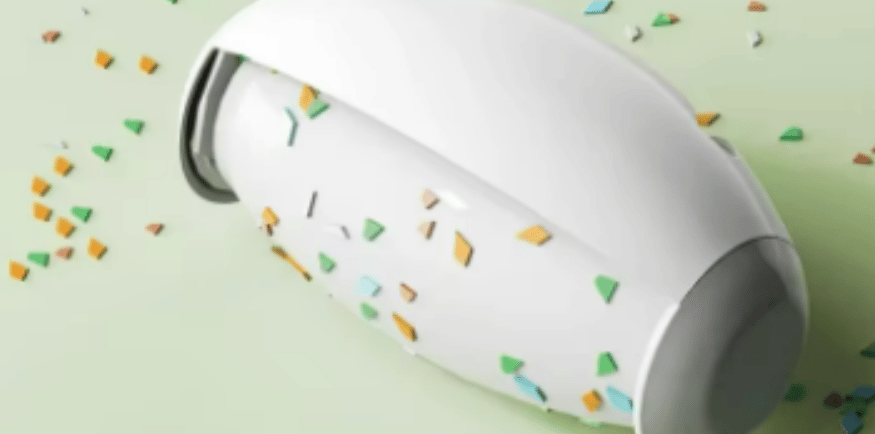Huge discounts on selected items now!
Mastering Lint Removal: Tips and Tricks for Keeping Your Clothes Lint-Free
8/26/20247 min read


Introduction to Lint Removal
Lint removal is a crucial aspect of clothing maintenance, essential for preserving the aesthetic appeal and prolonging the lifespan of garments. Lint, generally comprising tiny fibers that come off fabrics, tends to accumulate on the surface of clothes through regular wear and washing. Understanding the basics of lint accumulation is the first step in mastering its removal and ensuring your clothes maintain a fresh, new look for as long as possible.
Lint is produced when fabrics experience friction, shed fibers, and form tiny, fuzzy bits that cling to garments. These fibers can originate from different sources such as other clothes, towels, or even bedding. Fabrics like cotton, wool, and some synthetics are especially prone to shedding lint. The accumulation of lint can cause several issues; it not only diminishes the newness and attractiveness of clothes but can also make them look old and worn well before their time.
Moreover, excess lint can cause discomfort, particularly when it adheres to sensitive areas of the skin. In severe cases, such as heavy lint build-up in washing machines or dryers, it may lead to operational inefficiencies or even potential fire hazards due to clogged filters. That’s why it’s vital to incorporate effective lint removal techniques into your regular fabric care routine.
By developing a good understanding of what lint is and how it forms, you can effectively mitigate its presence. Regular maintenance practices, combined with the use of suitable lint-removal tools, can significantly reduce lint build-up, enhancing the longevity and visual appeal of your wardrobe. As we delve deeper into the topic, you'll discover practical tips and strategies to master the art of lint removal, ensuring your clothes remain impeccable, comfortable, and safer to use.
How to Clean a Reusable Lint Remover
Reusable lint removers are a sustainable and efficient solution for keeping your clothes lint-free. There are various types, including fabric brushes and sticky rollers, each requiring specific care to maintain effectiveness. Cleaning these devices regularly ensures they operate at their best, providing you with optimal lint removal results.
Fabric Brushes: These lint removers typically feature a double-sided design with a soft, fabric-covered brush. To clean a fabric brush, follow these steps:
1. Use a comb or similar tool to remove any accumulated lint and debris from the brush surface. 2. Prepare a mild soap solution by mixing a small amount of gentle detergent with warm water. 3. Dip a soft cloth into the soapy mixture, wring out excess water, and gently wipe down the brush surface. 4. Rinse the brush with a cloth dampened in clean water to remove any soap residue. 5. Allow the brush to air dry completely before using it again.
Sticky Rollers: These lint removers use an adhesive surface to pick up lint and hair. Cleaning a reusable sticky roller involves the following steps:
1. Once the sticky surface is covered with lint, rinse it under warm running water to remove debris. 2. Use your hands to gently agitate the roller surface while rinsing to ensure all lint is washed away. 3. If necessary, use a mild soap solution to clean the roller, being careful not to oversaturate. 4. Rinse thoroughly to remove soap residue. 5. Allow the roller to air dry. Once dry, the adhesive surface should regain its stickiness, ready for reuse.
Regular maintenance is crucial for both types of reusable lint removers. Neglecting to clean them can result in reduced effectiveness, prolonging the lint removal process. By incorporating these simple cleaning routines, you ensure your reusable lint removers remain in top condition, extending their lifespan and enhancing their overall performance. Keeping these devices clean not only provides optimal lint removal but also contributes to a more sustainable, less wasteful lifestyle.
Effective Methods to Wash Off Lint
Lint can easily cling to your clothes, creating an unsightly appearance and sometimes even damaging delicate fabrics. One of the most effective methods for washing away lint involves using traditional washing machines along with specific laundry additives designed to target and remove lint. Utilizing a gentle cycle and cold water can help minimize lint formation. Certain fabric softeners and laundry detergents are engineered to prevent lint accumulation and aid in its removal during the wash cycle, making them excellent choices for combating this common issue.
Besides mechanical methods, hand-washing also serves as a viable alternative for delicate garments. For hand-washing clothes, opt for a mild detergent that is formulated to reduce lint build-up and prevent fibers from loosening. Washing aids such as lint-removing balls or reusable dryer sheets can also be added to the laundry to enhance lint removal efficiency. Ensure you're thoroughly rinsing clothes to eliminate any residual detergent, which could attract more lint.
Preventive measures play a crucial role in keeping your clothes lint-free during the washing process. Turning your garments inside out before washing can significantly reduce the amount of lint that sticks to the exterior fabric surfaces. Similarly, segregating fabrics by type is critical; wash items like towels or other high-lint materials separately from clothes that attract lint easily, such as synthetic or knitwear fabrics.
Using a high-quality lint brush or a sticky lint roller post-wash can also help remove any remaining lint. Additionally, regularly cleaning your washing machine’s lint trap or filter is essential to maintain its efficiency in dealing with lint. By incorporating these effective methods and preventive tactics into your laundry routine, keeping your clothes lint-free becomes a far more manageable task.
Removing Lint from Clothes Without Washing
Maintaining a garment's pristine condition often involves quick and reliable methods to tackle lint without resorting to washing. Various tools and techniques enable effective lint removal while preserving the integrity of the fabric. Here are some proven alternatives to keep your clothes lint-free.
Lint Rollers: Lint rollers are one of the most convenient tools for removing lint from surfaces. Simply roll the adhesive-covered surface over your garment; the lint will stick to the roller. This method is particularly useful for light to moderately linty clothes and works well on most fabrics you wear regularly.
Adhesive Tape: When a lint roller isn't available, adhesive tape serves as an excellent substitute. Wrap a piece of tape around your hand with the sticky side facing out and pat it across the fabric. This method is ideal for small or localized lint problems and can easily be adapted for travel or on-the-go fixes.
Static Brushes: Static brushes attract lint using the principles of static electricity. Gently brushing the fabric with a static brush removes lint without damaging the fibers. This tool is particularly beneficial for delicate fabrics, such as silk or cashmere, where more abrasive methods could cause harm.
Pumice Stones: A pumice stone can also be effective in removing lint from clothing. Gently rub the stone along the affected area to lift lint. This technique is best suited for heavier fabrics like wool or denim, which can withstand the mildly abrasive nature of the stone.
Home Remedies: Simple household items can also come in handy for lint removal. A damp sponge, for instance, gently wipes away lint without soaking the fabric. Similarly, rubber gloves work well when lightly dampened and then run across the fabric in a sweeping motion. These methods are beneficial for delicate fabrics that can be damaged by more aggressive techniques.
These alternatives to washing are not only quick but also help prolong the lifespan of your clothes. By incorporating these methods, you can keep your garments looking clean and fresh while minimizing wear and tear caused by frequent laundering.
Alternative Solutions to Lint Removers
When it comes to keeping your clothes lint-free, conventional lint rollers aren't the only solution. Numerous household items can serve as effective substitutes, ensuring you never have to worry about lint. Exploring these alternatives can provide both convenience and innovation in maintaining your wardrobe. Here, we delve into some of the most effective unconventional options, their uses, and the pros and cons of each.
Velcro Hair Curlers
Velcro hair curlers can be a surprising yet efficient tool for removing lint. Their textured surface naturally grabs and lifts lint from fabrics. To use, simply roll the curler over the garment in short, quick strokes. The advantages include easy accessibility and a reusable nature. However, be cautious on delicate fabrics, as the Velcro could potentially cause snags.
Rubber Gloves
Household rubber gloves are another handy alternative. When worn and slightly dampened, they create static that attracts lint. Rub your gloved hand over the fabric, and you’ll notice lint adhering to the glove. This method is particularly budget-friendly and easy to use. On the downside, it may not be as effective on heavier fabrics or for larger lint buildups.
Dryer Sheets
Dryer sheets not only soften fabrics but can also be used to remove lint. Gently rubbing a dryer sheet over your garment helps to reduce static and lift off lint. This method is simple and leaves a pleasant scent on your clothes. However, effectiveness might diminish on larger, stubborn lint balls, and repeated use could leave a residue on darker fabrics.
Choosing the Best Solution
When selecting a substitute for traditional lint removers, consider the type of fabric and the severity of lint accumulation. For delicate garments, opt for less abrasive methods like rubber gloves or dryer sheets. For tougher fabrics or larger amounts of lint, Velcro hair curlers may be more efficient. By assessing the specific needs of your wardrobe, you can find the ideal lint removal method that works best for you.
Each of these household alternatives offers a unique approach to maintaining a lint-free wardrobe. Understanding their applications, strengths, and limitations ensures you can effectively manage lint, keeping your clothes looking fresh and clean.
Benefits of Using a Washable Lint Roller
Washable lint rollers offer a range of benefits that make them a standout choice when it comes to keeping your clothes lint-free. Unlike traditional single-use lint rollers, washable lint rollers are designed for repeated use, providing significant environmental and cost-saving advantages. By opting for a reusable option, you reduce the amount of plastic waste generated and contribute to a more sustainable lifestyle. This is particularly important in today's world, where minimizing our environmental footprint has become increasingly crucial.
From a cost perspective, investing in a washable lint roller proves to be economical in the long run. Though the initial purchase may be slightly higher than that of a disposable lint roller, the ability to reuse it countless times leads to considerable savings. Without the need for endless replacements, your expenses on lint removal products are drastically reduced.
In terms of efficiency, washable lint rollers are known for their reliable performance. They are highly effective at picking up lint, pet hair, and other debris from various fabric surfaces. Many users find them more robust and durable compared to single-use versions, ensuring a thorough clean each time.
To use a washable lint roller, simply roll it over the area requiring lint removal. Once the roller surface becomes fully covered with lint, it can be rinsed under water to remove accumulated debris. After washing, allow it to dry completely before the next use. Often constructed from materials like silicone, these rollers maintain their stickiness after multiple washes, ensuring long-lasting usability.
Maintaining a washable lint roller is straightforward. Periodic cleaning is crucial to ensure its longevity. Following the manufacturer's instructions for care can prolong the roller's life and maintain its effectiveness. Users who have incorporated washable lint rollers into their routines often share positive testimonials about their experiences. For instance, one user noted a significant decrease in the frequency of purchasing disposable rollers, expressing satisfaction with the product's durability and ease of use.
By opting for a washable lint roller, you enjoy a practical, cost-effective, and environmentally conscious method for keeping your clothes lint-free.
